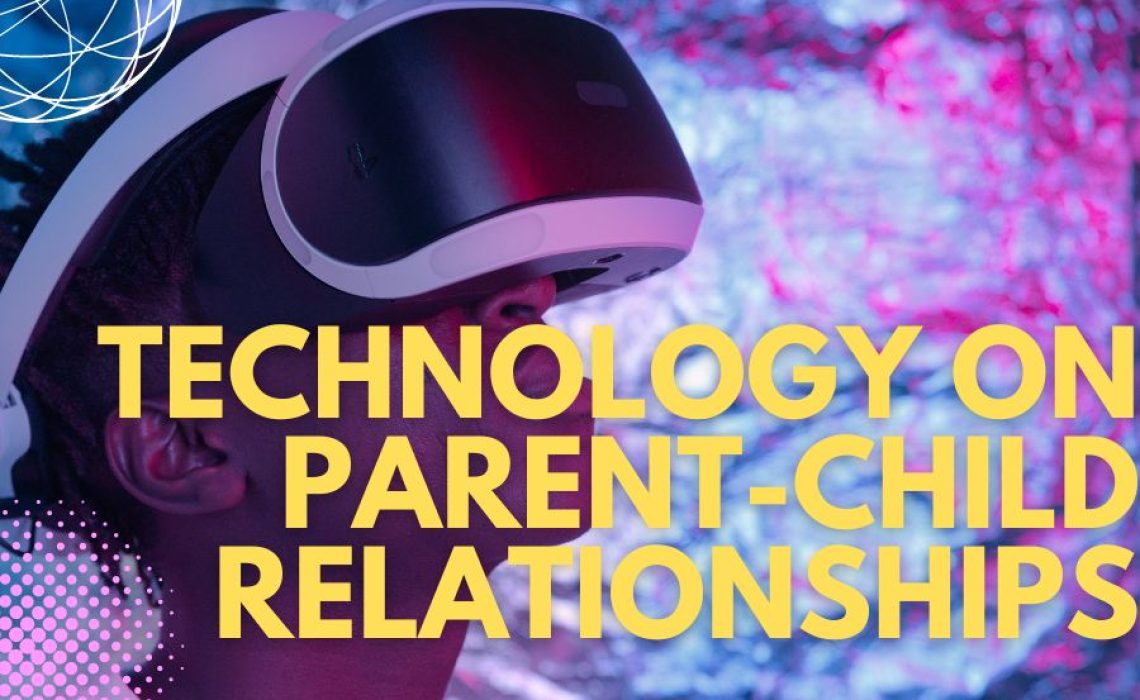In today’s rapidly evolving digital landscape, the convergence of technology and parent-child relationships presents a multifaceted and intriguing subject. As our lives become increasingly intertwined with gadgets and devices, it’s crucial to pause and reflect on the profound effects they may have on the intricate dynamics of family ties. Technology can indeed be a double-edged sword, offering both unparalleled opportunities and significant challenges to parents and children. This blog delves into the captivating realm of technology’s impact on parent-child relationships, investigating its positive influences and potential drawbacks, all while aiming to deliver insights and strategies to help families traverse this digital terrain with heightened assurance and purpose.
Table of Contents
ToggleNavigating Parent-Child Relationships in the Digital Age
The Advantages of Technology in Parent-Child Relationships
Embracing technology has undoubtedly led to numerous advantages in parent-child relationships. Here, we delve into a few key areas where tech has fostered positive change.
- Communication breakthroughs: With smartphones, tablets, and computers at our fingertips, parents and children can now effortlessly stay connected. Text messages, video calls, and social media make it easier to share daily updates, bridge geographical gaps, and maintain strong bonds.
- Education – the world at their fingertips: The vast digital landscape offers countless educational resources for children of all ages. Online courses, educational apps, and virtual tutoring open doors to knowledge that previous generations could only dream of accessing, while simultaneously providing parents with tools to support their children’s learning.
- Bonding experiences reimagined: Technology offers a myriad of opportunities for families to bond over shared interests. Whether it’s exploring fantastical realms in online gaming, streaming heartwarming movies, or embarking on virtual reality adventures, tech enables families to create lasting memories together.
- Parental peace of mind: Today’s tech offers parents innovative solutions to monitor their child’s well-being. From GPS tracking to health-monitoring apps, these advancements provide a sense of security, allowing parents to breathe a little easier.
In essence, technology has undoubtedly enriched parent-child relationships in many ways. Yet, striking a balance between embracing these benefits and mitigating potential risks remains crucial for fostering healthy, happy families.
The Challenges of Technology in Parent-Child Relationships
Technology has brought a lot of good things to parent-child interactions, but it has also brought some problems.
We’ll explore some of the key issues that can affect family dynamics in this digital era.
The screen time conundrum: Both children and adults can suffer physical and mental health repercussions from excessive screen time, which can erode quality time spent together and weaken family bonds. Striking a balance between screen usage and in-person interaction is essential.
Staying safe in cyberspace: The digital realm presents dangers like cyberbullying, inappropriate content, and data breaches. Parents must stay vigilant and educate their children on online safety to minimize such risks.
How to deal with the effects of social media: Social media platforms can affect children’s self-esteem, mental health, and ties with others.
Fostering open communication between parents and children is key to addressing these issues and encouraging healthy social media practices.
Bridging the digital divide: Unequal access to technology and digital literacy due to socioeconomic disparities can create barriers for some families. Closing this gap is crucial for ensuring equal opportunities for all children to flourish in today’s digital age.
In a nutshell, technology may present some challenges for parent-child relationships, but it also offers numerous positives. By remaining mindful of these potential pitfalls and working together, families can harness the power of technology while mitigating its negative impact.
Strategies for Navigating Technology in Parent-Child Relationships
Navigating technology in parent-child relationships can be a tricky endeavour. Here are some strategies to ensure a harmonious balance between embracing the digital world and maintaining strong family bonds.
- Set boundaries and rules: Establishing age-appropriate guidelines for technology use is crucial. Discuss screen time limits, curfews, and the types of content allowed. By setting clear expectations, parents can foster a healthy relationship with technology for their children.
- Keep communication open: Encourage open dialogue about technology, covering topics like online safety, privacy, and appropriate behaviour. This ongoing conversation can help children feel comfortable discussing concerns or seeking guidance from their parents.
- Foster a balanced lifestyle: Promote a mix of online and offline activities. Encourage children to engage in physical exercise, pursue hobbies, and participate in family outings. By diversifying interests, families can enjoy the benefits of technology without becoming overly reliant on it.
- Lead by example: Parents should model healthy technology habits themselves. Demonstrate responsible screen time, engage in digital-free conversations, and participate in family activities that don’t involve devices.
- Educate yourself: Stay informed about the latest technological developments, potential risks, and parental control options. Knowledge is power, and understanding the digital landscape can help parents guide their children more effectively.
In summary, navigating technology in parent-child relationships involves a delicate balance of setting boundaries, encouraging open communication, and fostering a well-rounded lifestyle. By implementing these strategies, families can fully embrace the advantages of technology while minimizing potential drawbacks.
Conclusion
In conclusion, technology’s impact on parent-child relationships is a multifaceted and complex issue. While it presents a plethora of benefits, such as enhanced communication channels, access to educational resources, and novel bonding experiences, there are also significant challenges to consider, including screen time concerns, online safety and privacy issues, and the digital divide.
To navigate this digital landscape effectively, it is crucial for families to strike a balance between embracing the advantages of technology and addressing the potential pitfalls. By establishing clear boundaries, fostering open communication, and promoting a balanced lifestyle, parents and children can work together to harness the power of technology for personal growth and stronger relationships.
Ultimately, as we continue to explore the ever-evolving world of technology, maintaining a mindful approach and staying adaptable to change will be key to ensuring that families thrive in the digital age.
FAQ
Q1: What is the impact of technology on parent-child relationships?
A1: Technology has both positive and negative impacts on parent-child relationships. On the positive side, it can enhance communication, provide access to educational resources, and create new bonding experiences. On the negative side, it can lead to screen time overload, safety and privacy concerns, and issues related to social media usage.
Q2: How can families strike a balance between embracing technology and mitigating its potential negative effects?
A2: Families can strike a balance by setting boundaries and rules for technology use, fostering open communication, promoting a balanced lifestyle with a mix of online and offline activities, leading by example, and staying informed about the latest technological developments.
Q3: How can parents help their children navigate the challenges of social media?
A3: Parents can help their children by encouraging open communication about social media usage, discussing concerns, and promoting healthy social media habits. It is also important for parents to educate themselves about various social media platforms and set age-appropriate guidelines.
Q4: What are some strategies to ensure a healthy balance between screen time and face-to-face interaction?
A4: Some strategies include setting screen time limits, creating device-free zones and times in the home, engaging in offline family activities, and encouraging children to participate in hobbies and interests that don’t involve screens.
Q5: How can parents address safety and privacy concerns related to technology?
A5: Parents can address safety and privacy concerns by staying informed about potential risks, educating their children on online safety, using parental control options, and setting clear expectations for online behavior. It’s also crucial to maintain open lines of communication and encourage children to report any concerns or incidents.
Q6: What can be done to bridge the digital divide and ensure equal opportunities for all children?
A6: To bridge the digital divide, it is important to advocate for policies that promote equal access to technology and digital literacy, support community programs that provide resources and training, and encourage public-private partnerships to address the gap.










1 thought on “How Does Technology Impact Parent-Child Relationships?”
Pingback: How Does the Digital Age Affect a Child's Development?